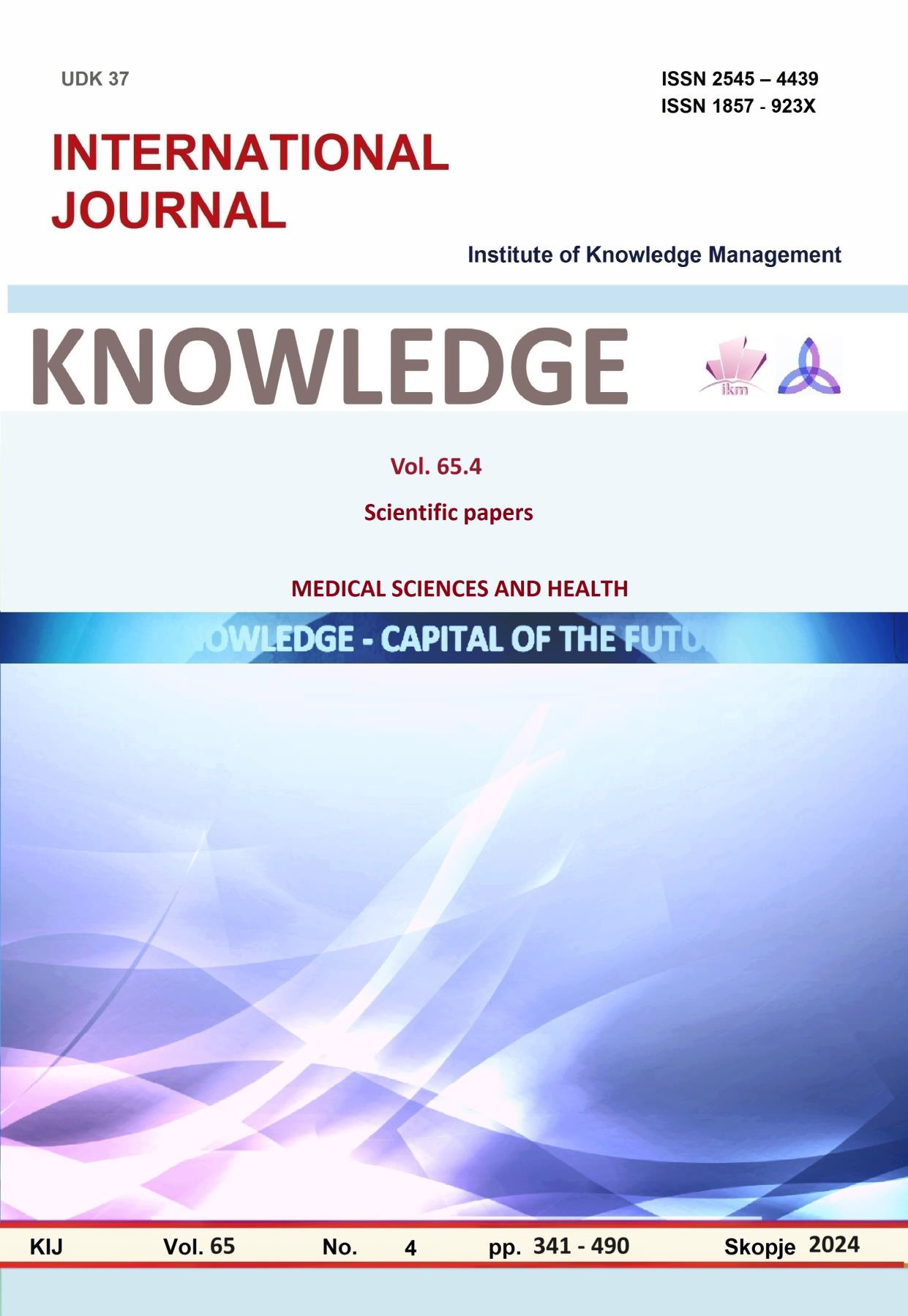ДЕНТАЛНИ И ОКЛУЗАЛНИ КАРАКТЕРИСТИКИ КАЈ ПАЦИЕНТИТЕ СО ИМПАКТИРАНИ МАКСИЛАРНИ КАНИНИ
DENTAL AND OCCLUSAL CHARACTERISTICS IN PATIENTS WITH IMPACTED MAXILLARY CANINES
Author(s): Jeta Bedzeti, Cena Dimova, Natasha Tosheska Spasova, Armend Redzepi, Tatjana Georgievska JancheskaSubject(s): Social Sciences, Health and medicine and law
Published by: Scientific Institute of Management and Knowledge
Keywords: Impacted maxillary canines;Overjet;Overbite;Palatal index
Summary/Abstract: Impacted teeth, retained are fully formed teeth, but with delayed eruption time on their own or elsewhere in the dental arch or outside of it, based on clinical and radiographic assessment. Objective: To determine the dental and occlusal characteristics in patients with impaction of the maxillary canines. Materials and methods: Orthodontic study models from 60 male and female subjects aged 11 to 18 years with unilateral and bilateral impaction of maxillary canines were used. The control group for gnathometric analysis consisted of 60 subjects with normally erupted maxillary canines of the same age. The following parameters were measured on the models of the subjects and the control group: Palatal index (palate depth), Overjet (oj), Overbite (ob), and Dent-alveolar intermaxillary relationship based on incisal classification: I incisal, II/I, II/II, and III incisal class. Results: Among the patients in the study group, 36.7% had an impacted maxillary canine 13, and 21.7% had an impacted maxillary canine 23. Bilateral impaction of maxillary canines 13 and 23 was present in 41.7%. Unilateral impaction of maxillary canines was recorded in 58.4% of the study group. A significant association was found between bilateral/unilateral impaction versus the side of buccal/palatal impaction for p<.05 (Pearson Chi-square: 10.8225, p=.001003). No significant association was found between bilateral/unilateral impaction versus gender for p>.05 (Pearson Chi-square: 2.19429, p=.138523). A significant correlation was recorded between genders versus the registration of impacted maxillary canines (Chi-square: 4.1262, p=.0422247). A significant difference was confirmed between the average age of subjects with unilateral and bilateral impaction (Mann-Whitney U Test, p=0.007947). According to the Mann-Whitney U Test, the difference in average values of the palatal index (palate depth) between the two groups was not significant for p>.05 (Mann-Whitney U Test, p=.068566). According to the Mann-Whitney U Test, the difference in average values of overjet (oj) or horizontal incisal distance between the two groups was not significant for p>.05 (Mann-Whitney U Test, p=.140956). According to the Mann-Whitney U Test, the difference in average values of overbite (ob) or vertical incisal distance between the two groups was not significant for p>.05 (Mann-Whitney U Test, p=.719198). No significant correlation was recorded between dentoalveolar intermaxillary relationship based on incisal classification and membership in the two groups for p>.05 (Pearson Chi-square: 8.98978, p=.174154). Conclusion: In relation to the buccal/palatal impaction position, there is a significant association between bilateral/unilateral impaction. There is no significant association between bilateral/unilateral impaction in relation to gender. Female patients are twice as likely to develop impacted maxillary canines compared to male patients. The average age of patients with unilateral impaction is 15.2±2.2 years, while the average age of patients with bilateral impaction is 13.1±1.9 years. There is a significant difference in the mesiodistal dimensions of teeth 16, 13, 21, and 23 between the two groups studied. The total sum of the mesiodistal dimensions of the teeth is greater in patients with impacted maxillary canines. In the IG, the most represented depth of the palate is medium depth (28.0 - 39.9) at 55.0%, followed by shallow depth at 43.3%, and high depth (>=40.0) at 1.7%. There is no significant difference in the depth of the palate between the groups studied. There is no significant difference between the two groups regarding overjet and overbite. The majority of patients with impacted maxillary canines are in Class I incisal, with 36.7%.
Journal: Knowledge - International Journal
- Issue Year: 65/2024
- Issue No: 4
- Page Range: 355-362
- Page Count: 8
- Language: Macedonian

